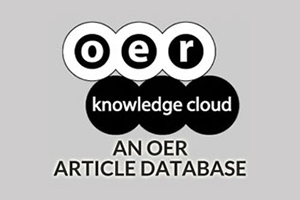Incentives and Disincentives for the Use of OpenCourseWare
DOI:
https://doi.org/10.19173/irrodl.v10i5.746Keywords:
OpenCourseWare, open educational resourcesAbstract
This article examines Utah residents’ views of incentives and disincentives for the use of OpenCourseWare (OCW), and how they fit into the theoretical framework of perceived innovation attributes established by Rogers (1983). Rogers identified five categories of perceived innovation attributes: relative advantage, compatibility, complexity, trialability, and observability. A survey instrument was developed using attributes that emerged from a Delphi technique with input from experts in the OCW field. The survey instrument was sent to 753 random individuals between 18 and 64 years of age throughout Utah. Results indicated that the greatest incentives for OCW use were the following: (a) no cost for materials, (b) resources available at any time, (c) pursuing in depth a topic that interests me, (d) learning for personal knowledge or enjoyment, and (e) materials in an OCW are fairly easy to access and find. The greatest disincentives for OCW use were the following: a) no certificate or degree awarded, (b) does not cover my topic of interest in the depth I desire, (c) a lack of professional support provided by subject tutors or experts, (d) a lack of guidance provided by support specialists, and (e) the feeling that the material is overwhelming. The authors recommend that institutions work to transition some OCW users into degree-granting paid programs as well as adopt a marketing campaign to increase awareness of OCW. Additionally, OCW websites should make their content available to recommendation engines such as ccLearn DiscoverEd, OCW Finder, or OER Recommender and should reciprocally link to one or more of these sites.Published
How to Cite
Issue
Section
License
This work is licensed under a Creative Commons Attribution 4.0 International License. The copyright for all content published in IRRODL remains with the authors.
This copyright agreement and usage license ensure that the article is distributed as widely as possible and can be included in any scientific or scholarly archive.
You are free to
- Share — copy and redistribute the material in any medium or format
- Adapt — remix, transform, and build upon the material for any purpose, even commercially.
The licensor cannot revoke these freedoms as long as you follow the license terms below:
- Attribution — You must give appropriate credit, provide a link to the license, and indicate if changes were made. You may do so in any reasonable manner, but not in any way that suggests the licensor endorses you or your use.
- No additional restrictions — You may not apply legal terms or technological measures that legally restrict others from doing anything the license permits.







